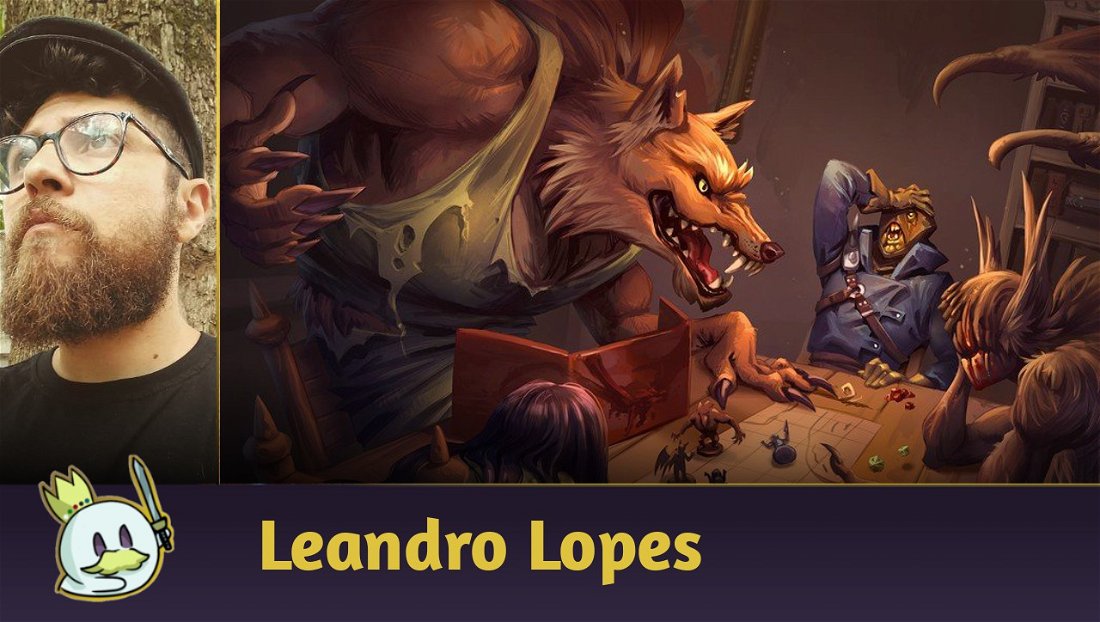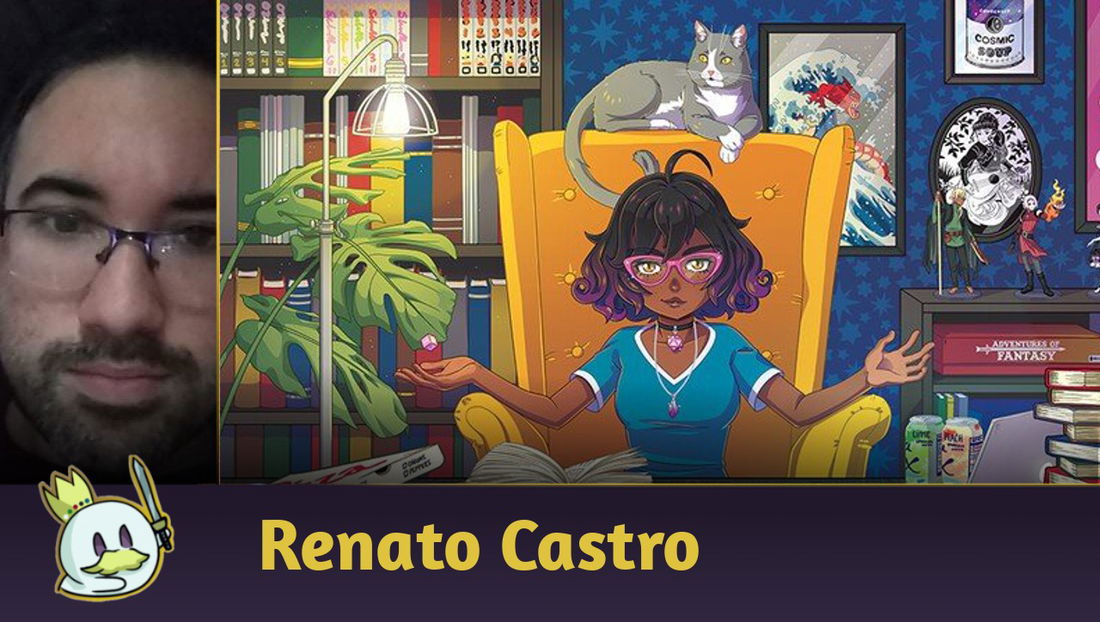Contextualizing
The 2000s came with everything.
D&D launched its 3.5 version in a confusing scenario for the RPG, which was taking larger steps within the fast-growing digital market.
It was in this world of analog to digital transformation that Wizards of the Coast made their biggest and riskiest RPG move yet:
The SRD (System Reference Document) and the OGL (Open Game License).
And those two acronyms defined an era.
SRD was a manual with all the basic rules of D&D 3.5, without any reference to scenarios, characters or context, just its mechanics and completely free.
OGL was a registry that allowed the use of the freely released and commercial SRD by anyone.
That's right, from that moment on, any person or company could use the basis of the most famous RPG in the world to create and sell their own game without connection to Wizards, its owner.
From one day to the next, the RPG market spoke a single language and adaptations, scenarios and systems emerged based on the d20 system of Dungeons & Dragons seeking to capture part of that market and the huge amount of assiduous fans for news.
Years passed and in 2008 a new edition of D&D was released, bringing considerable changes and dissatisfaction.
In August 2009, Pathfinder emerged adapting and expanding the rules of 3.5, drawing in a huge amount of fans who felt abandoned by Wizards.
Called by some "D&D 3.75", Pathfinder grew rapidly and to this day, in its second edition, is one of the greatest contenders for Dungeons & Dragons' hegemony on the world's most famous RPG podiums.
But would the new be able to overcome the old? Would a “copy” be able to improve the original to the point of surpassing it?
Today we're going to dig into the details of D&D 5th Edition and Pathfinder 2nd Edition, a clash of titans of the role-playing market with similar origins but entirely different paths.
Get ready and let's go to battle!
The competitors

D&D 5th Ed is the newest version of Dungeons & Dragons, released in 2014 by Wizards of the Coast with the weight of generations on its back, inheriting the RPG legacy that started the hobby as we know it.
Pathfinder came about as a reflection of the dismay brought about by fourth edition D&D and the massive amount of fans of edition 3.5 who still wanted to play it, creating an updated and expanded version of those rules.
Its most recent version, Pathfinder 2nd Ed that will be analyzed in this article, followed in its own footsteps from OSR 3.5, with mechanical and conceptual innovations that finally gave the game its own personality and a captive group of fans.
1st ROUND: Art and Layout
Both books invest heavily in these aspects, drawing attention to their multiple internal arts, adornments and efficient layout, each for its own purpose.
The D&D arts are more classic for medieval fantasy, while Pathfinder bets on a more updated vision with more dynamic traits, stylized clothes and a less realistic look.
In diagramming, Pathfinder resembles a classic encyclopedia with a sidebar indicating which part of the book you are in and with its rules and numerous details listed organized according to the theme of the chapter.
In D&D, we have a cleaner air with the text divided into blocks and chapters, in addition to a good amount of art per page, never giving too much impression of text.
Result
With a larger set of artwork, clean and consistent diagramming without making reading confusing or boring even in areas with denser rules, D&D takes this round.

2nd ROUND: Material released
Pathfinder is a newer system, so it starts disadvantaged against its rival.
So far, it has bestiaries and few supplements with additional rules for players, all of which are excellent and versatile, in addition to several adventure books and expansions of the system's main scenarios.
D&D 5th Ed, while not having as much material as its predecessors, has a significant amount of physical books and official digital material in addition to campaigns, scenario books, bestiaries and many others.
Result
D&D takes the round today especially for quantity and overall quality, although in the future Pathfinder may surpass it on both levels.

3rd ROUND: Scenarios
A system does not live by rules alone, and if there are no good scenarios to play them, it will simply not attract attention as it should.
Pathfinder's main setting is Gallarion, a medieval fantasy world that rivals Earth itself in many character and geography points.
Its story of advancing nations, a mighty immortal guide that elevates society, and ultimately, its demise and population left to their own luck they create fantasy stories, but with a much more human touch and down to earth than expected.
Also worth mentioning is its futuristic counterpart, Starfinder. A high-tech system and setting with literally entire planets to explore.
In D&D, we have a huge variety of scenarios thanks to the long time the franchise has existed. From classic universes like Forgotten Realms to worlds focused on horror or wizardry school scenarios, all within the same bases and even connectable with some effort.
On the other hand, many scenarios from previous versions are still abandoned by the current system of which, meanwhile, has decided to focus on new environments that players don't necessarily want.
Result
In this Round Pathfinder takes it by a little, as it stays well-structured in the power fantasy it defined having variety, but without losing focus on what it's good at doing and what its audience wants to play.

4th ROUND: Fanbase and popularity
D&D is for many the first RPG created, generating an unfair dispute in this regard, but let's focus on the fifth edition only.
Currently, Dungeons & Dragons has gone through dangerous transitions with books and business choices that have divided its audience (See more about this HERE ), and this is dividing your audience and creating discussions across the game's forums with each new release.
Meanwhile, Pathfinder remains well-structured with a smaller but loyal audience. Its launches with collective support are always welcome and successfully completed.
Result
Pathfinder wouldn't stand a chance considering the size of the fanbase, but size isn't everything and because of the consistency and current general quality of its audience, it takes the round.

5th ROUND: Rules
D&D follows the same foundation since its launch, a system focused on medieval fantasy with origins in wargames and survival games that slowly modernized to what we know today.
D&D 5th Edition is a lot more agile than its predecessor, boiled down to a few general rules that newbies learn easily but take time and study to master, especially if you're looking for optimized characters — which is fun, but can keep ideas from losing power in comparison to famous sheets and combos.
Currently, new rules are emerging that break the pattern of combos between race, class and talents that promise to make the tables less predictable and less punishing for those looking for a different character.
Pathfinder, in its first edition, took D&D 3.5 and optimized what fans were looking for as a response to the fourth edition that displeased many people. However, in its second edition, the game took its own path with its own personality and mechanics very different from the classic Dungeons & Dragons.
It is currently a rules system focused on the use of turn-based actions and a larger and more balanced character creation structure than D&D, albeit more complex. Even experienced players can be scared by the amount of skills, powers and other details that a character has in this game in the first levels, which pleases one audience, but alienates another.
We can say that anyone looking for the mechanical experience of a good fantasy RPG that gives freedom, but still focuses on strategy, has Pathfinder 2 as a powerful ally. But if you're looking for a lighter, more dynamic game, D&D 5e is still a stable, secure, and easy-to-maintain system for experienced hobbyists and newbies alike.
Result
Both systems, although with the same origin, took similar but fundamentally different directions without losing quality, and that's why they deserve the draw in this round!

Result
In a tough duel, Dungeons & Dragons 5e and Pathfinder 2e tie for 3 rounds each and no, that wasn't planned, but it makes sense!
D&D is the world's best known RPG and synonymous with the hobby. It's not hard to find fanatical players who have only played Dungeons & Dragons in their life and are perfectly satisfied with it.
Pathfinder, although it doesn't have the same fanbase, did a wonderful job on its second edition, with a robust and balanced system that in the right hands is capable of emulating incredible campaigns.
Thus, although from different points, both have the same general quality. They are works that deserve to be played and that have great potential ahead of them, whether confirming that it is still a relevant and current RPG or that it can climb its own steps without getting lost on the way.

Bonus Round!
Of course, you couldn't stay out of this fight.
What's your favorite? The good old Dungeons & Dragons or the new classic Pathfinder? Do you disagree with a round or have suggestions? Let's end this debate in the comments!














— Kommentare 0
, Reaktionen 1
Sei der erste der kommentiert